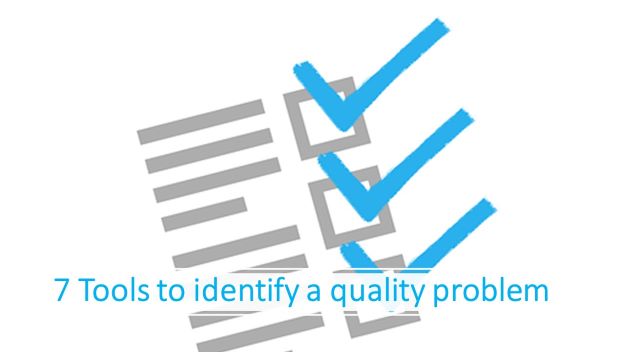These problem-identification tools are the most commonly used and most effective tools for both- identification of the quality problem as well as ideating for potential solutions to solve / circumvent the problem.
The 7 tools used for identifying quality problem include: Check sheet, Cause-and-effect diagram, Control chart, Pareto chart, Histogram, Flow chart and Scatter diagram.
A check sheet is a tool that allows for the collection of information regarding quality issues. Check sheets for quality problems scores the amount of problems for a number of predetermined defect causes. Once the check sheet is complete, the total score of problems for individual causes can then be used to make a Pareto chart or a histogram.
Cause-and-effect diagrams, also known as fishbone diagrams, depict the causes of individual events and the connection between the events. These diagrams are used to pinpoint the cause of a specific quality problem in order to fix the issue. It is common for these types of diagrams to be constructed by several team members in order for discussion to take place on the legitimacy of the causes. The fishbone diagram helps to get down to the 'root cause' of the problem. Hence fishbone diagram is also called as 'root cause analysis diagram'.
Control charts are made up of a horizontal line that represents the norm of the process. There is also a line above and below, to represent upper and lower regulation boundaries. Various samples are gathered over a period of time and added to the chart. It is clear that there is a quality problem, or one that should be looked into, when there are measurements that extend above or below the norm line. Several types of control charts are used during continuous improvement campaigns depending on whether the available data is 'qualitative' or 'quantitative' in nature. In either cases, the purpose of a control chart is to ascertain 'process control and/or process stability'.
Pareto charts contain line graph and bars in order to graph data. It is a method of finding out where the sources for defects come from and pinpointing the source of largest reoccurring defect. It is easy to understand due to its simply detailed visual presentation.
Histograms are used to give a rough assessment for the probability of a source of a problem. It shows the occurrences of observations that occur amongst the subject focus point. Histograms are also called as frequency distribution diagram.
Flow charts depicts process flow and the various stages involved in a process. They allow viewers to easily identify quality problems by clearly showing the details of the process being studied.
Scatter diagrams depict the connection between variables. By comparing two variables, it is easy to see where there is a correlation or where one is lacking.





















